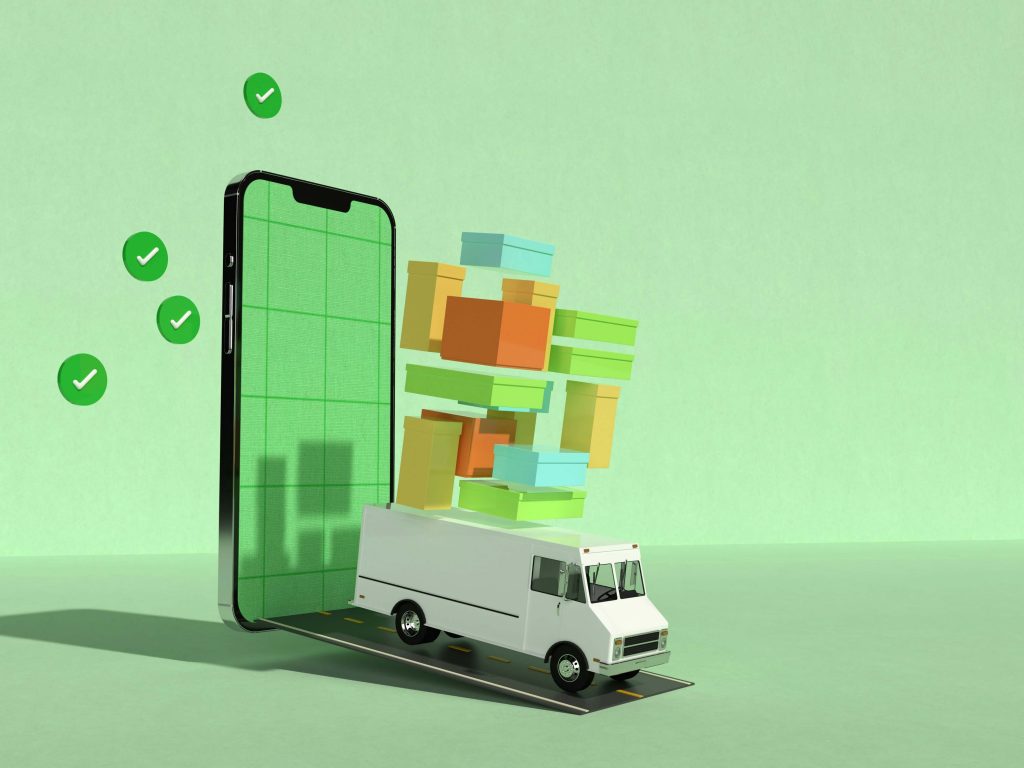Efficient order processing in a multichannel retail setup goes beyond merely handling transactions. It encompasses a comprehensive approach to managing customer orders from various channels in a centralized, seamless manner. This includes the swift capture of orders, accurate inventory management, timely fulfillment, and effective customer communication throughout the purchasing journey. The ability to streamline these processes not only enhances customer satisfaction but also drives sales, optimizes inventory management, and reduces operational costs.
In this article, we will explore the various components, challenges, and technological solutions that can help retailers achieve a seamless, efficient order management system.
Understanding multichannel order processing
Multichannel order processing is the backbone of a successful retail operation in today’s diverse and digitally driven market. It involves managing and fulfilling customer orders across multiple sales channels, including online stores, physical retail locations, marketplaces, and even social media platforms.
At its core, multichannel order processing encompasses several key components:
- Order capture: The initial step where orders are received from various channels. This could involve online shopping carts, in-store purchases, or orders placed through social media messaging platforms.
- Inventory management: Keeping track of stock levels across all sales channels and warehouses to ensure that products are available when and where they are needed.
- Order fulfillment: The process of picking, packing, and shipping orders to customers. This step must be carefully managed to meet delivery expectations.
- Customer service: Providing support throughout the order process, including handling inquiries, exchanges, and returns across all channels.
Managing orders across multiple channels introduces several challenges:
- Data integration: Ensuring consistent and accurate data across all sales channels, from inventory levels to customer information, is crucial. Discrepancies can lead to stockouts, overselling, or delays.
- Complex logistics: Fulfilling orders from multiple channels often involves complex logistics, especially when dealing with various shipping partners and fulfillment centers.
- Customer expectations: Today’s consumers expect fast, transparent, and flexible shopping experiences. Meeting these expectations requires sophisticated order processing systems.
Leveraging technology for efficient order processing

The successful management of these components and overcoming the associated challenges often hinge on the effective use of technology. An integrated Order Management System (OMS) serves as the nucleus of efficient multichannel order processing. Such systems centralize orders from all channels into a single platform, providing real-time visibility into inventory, orders, and customer data. This integration is crucial for making informed decisions and ensuring that every customer interaction adds value.
For instance, an advanced OMS can facilitate the secure handling of customer information through password hashing, ensuring that even as orders are processed across multiple channels, customer data remains protected. Moreover, these systems can automate various aspects of the order processing workflow, from order capture to fulfillment, significantly reducing manual errors and operational costs.
Additionally, the role of web feed management services in streamlining product listings and updates cannot be understated. By automatically adapting product URLs for consistency and search engine optimization—such as removing product categories from URLs—retailers can ensure that their products are easily discoverable and accurately represented across all channels. This seamless integration of technology not only enhances operational efficiency but also improves the overall customer shopping experience.
Enhancing customer interaction and conversion
In the intricate web of multichannel retail, engaging customers effectively and driving conversions are paramount. As retailers navigate the challenges of keeping pace with evolving consumer behaviors, leveraging technology to enhance customer interaction and monitor conversion rates becomes increasingly crucial.
Integrating social media messaging
Social media platforms have transcended their initial purpose of connecting people and have become vital channels for customer interaction and engagement in retail. Integrating social media messaging into the multichannel order processing strategy allows retailers to interact with customers where they spend a significant portion of their time. This approach offers a direct line for customer service inquiries, personalized shopping advice, and even order placement, creating a seamless and engaging shopping experience. By leveraging messaging platforms, retailers can quickly address queries or issues, fostering a sense of loyalty and encouraging repeat business.
Collaborative content editing
Accurate and appealing product information is crucial for driving online conversions. Collaborative content editing tools enable multiple team members to update product details, descriptions, and images in real-time, ensuring consistency and accuracy across all sales channels. This collaborative approach not only improves operational efficiency but also enhances the customer’s shopping experience by providing them with reliable and detailed product information.
Tracking conversions
Understanding which channels and strategies are most effective in converting browsers into buyers is essential for optimizing multichannel retail operations. Tracking conversions across different channels helps retailers identify successful tactics and areas needing improvement. For instance, analyzing the performance of a real estate lead generation campaign can offer insights into the types of content and engagement strategies that resonate with potential buyers.
Optimizing the checkout and fulfillment experience
A seamless checkout and fulfillment process is vital to closing the loop in a customer’s shopping journey, ensuring that the effort spent on engaging and converting leads to successful sales and satisfied customers. Optimizing these aspects in multichannel retail involves simplifying transactions, offering flexible fulfillment options, and ensuring transparency and convenience every step of the way.
Simplifying the checkout process
The complexity of the checkout process is a critical factor in cart abandonment rates. WooCommerce retailers can significantly improve conversion rates by streamlining checkout across all channels. This includes minimizing the number of steps to purchase, offering guest checkout options, and utilizing technologies that allow for the personalization of shipping and billing information.
Incorporating automatic and digital receipt options further simplifies the post-purchase experience. Providing customers with instant, accessible transaction records not only meets their expectations for efficiency but also opens up new channels for post-sale engagement.
Implementing dynamic shipping options
Today’s consumers expect a variety of shipping options that cater to their needs and preferences, whether it’s same-day delivery, in-store pickup, or cost-effective shipping solutions. Offering personalized shipping options during the checkout process can greatly enhance customer satisfaction. By integrating smart logistics solutions, retailers can dynamically offer shipping options based on the customer’s location, the contents of their cart, and inventory availability, thereby personalizing the shopping experience at a logistical level.
Leveraging technology for fulfillment efficiency
To ensure orders are fulfilled promptly and accurately, retailers must leverage technology to optimize their warehouse and inventory management systems. This includes automating picking and packing processes, using robotics for warehouse operations, and implementing systems that provide real-time inventory levels across all channels. Such technological integrations ensure that the right products are stocked and dispatched efficiently, minimizing delays and errors.
Post-sale engagement and feedback

Once a customer completes a purchase, the opportunity for strengthening brand loyalty and fostering long-term relationships begins. Post-sale engagement and feedback mechanisms are critical for multichannel retailers aiming to enhance customer satisfaction and encourage repeat business. This phase is where the culmination of the order processing experience can significantly influence a customer’s perception of the brand and their likelihood of becoming a repeat shopper.
The importance of post-sale communication
Effective post-sale communication is key to keeping customers engaged and informed. Sending automatic and digital receipts immediately after a purchase provides not only a record of the transaction but also an opportunity to thank customers for their business, fostering a positive relationship. Including personalized messages or offers in these communications can enhance the customer’s perception of the brand.
Gathering customer feedback
Actively seeking customer feedback is essential for continuous improvement and understanding customer satisfaction. This can be achieved by embedding feedback requests in digital receipts or follow-up emails. Such feedback, especially when acted upon, demonstrates to customers that their opinions are valued and that the brand is committed to meeting their needs and expectations.
Leveraging feedback for improvement
Customer reviews and feedback serve as a direct line of insight into what is working well and what could be enhanced. This information is invaluable for making data-driven decisions in product development, customer service, and marketing strategies. Implementing changes based on customer feedback not only improves the business but also shows customers that their input has a tangible impact, encouraging further engagement and loyalty.
Personalizing the customer experience
The data gathered through post-sale feedback can be used to personalize future interactions and offerings. Tailoring the shopping experience, from personalized shipping and billing information to customized product recommendations, can significantly enhance customer satisfaction and encourage repeat visits. Personalization signals to customers that the brand understands and values their unique preferences and needs.
Encouraging repeat business and loyalty
Engagement doesn’t end with a single sale. Through thoughtful post-sale communication, leveraging feedback, and personalizing interactions, retailers can encourage customers to return. Implementing loyalty programs or exclusive offers for returning customers can further incentivize repeat purchases, turning one-time buyers into loyal brand advocates.
Security and compliance in multichannel retail
In the dynamic landscape of multichannel retail, securing customer data and ensuring compliance with relevant regulations are not just operational necessities but foundational elements of customer trust and brand integrity. As retailers navigate the complexities of selling across various platforms, the imperative to protect sensitive information and adhere to legal standards becomes increasingly pronounced. This section explores the significance of security measures, like password hashing and compliance efforts in maintaining a secure and trustworthy retail environment.
Prioritizing data security
The digital nature of multichannel retail involves collecting, storing, and processing vast amounts of customer data, including personal information, payment details, and purchasing history. This data, while invaluable for personalization and operational efficiency, also presents a target for cyber threats. Implementing robust security measures such as password hashing—a technique that converts passwords into indecipherable codes—ensures that even in the event of a data breach, customer passwords remain protected. Beyond safeguarding passwords, employing end-to-end encryption for data transmission and regular security audits are critical for identifying vulnerabilities and fortifying the retail ecosystem against cyber attacks.
Ensuring compliance with regulations
Multichannel retailers operate within a web of legal and regulatory requirements designed to protect consumer rights and privacy. Regulations such as the General Data Protection Regulation (GDPR) in the European Union and the California Consumer Privacy Act (CCPA) in the United States set stringent standards for data privacy and consumer rights. Compliance with these regulations is not merely a legal obligation but a testament to a brand’s commitment to ethical business practices and customer respect. Retailers must stay abreast of relevant laws and regulations in every market they operate, adapting their policies and processes to maintain compliance and demonstrate their dedication to customer privacy.
Building customer trust through transparency
Transparency in how customer data is collected, used, and protected plays a pivotal role in building and maintaining trust. Clear, accessible privacy policies and practices not only fulfill regulatory requirements but also empower customers with the knowledge of their rights and the measures in place to protect their information. Offering customers control over their data, such as the ability to access, correct, or delete their information, further enhances trust and reinforces the customer-centric values of the brand.
The role of compliance in operational excellence
Adhering to security and compliance standards, while challenging, also offers an opportunity to streamline operations and improve overall business health. Compliance efforts can drive the implementation of best practices in data management, improve the efficiency of business processes, and reduce the risk of costly legal challenges. Moreover, the process of ensuring compliance often leads to a better understanding of the customer base, enabling more targeted and effective marketing strategies.
Conclusion
Streamlining order processing in multichannel retail is a multifaceted endeavor that extends beyond merely managing transactions across various platforms. It encompasses creating a seamless, efficient, and secure environment that enhances the customer experience at every touchpoint.
As we look to the future, the evolution of retail technology and customer expectations will undoubtedly introduce new challenges and opportunities for multichannel retailers. However, by maintaining a customer-centric approach, prioritizing efficiency and security, and leveraging data for personalized experiences, retailers can navigate these changes successfully.


